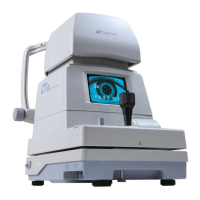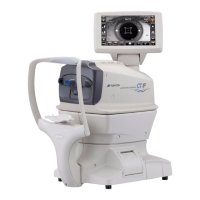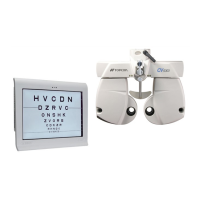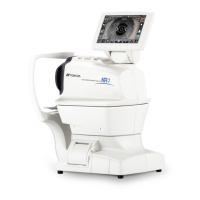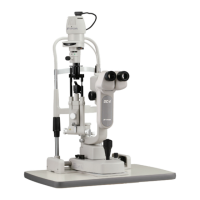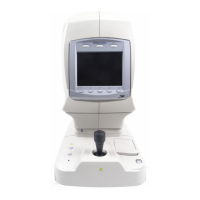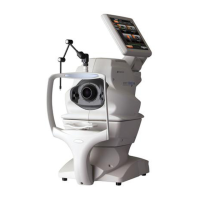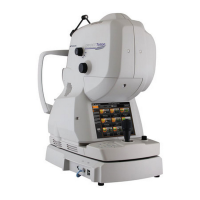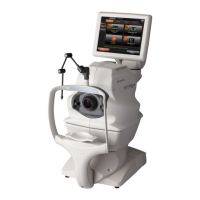31
OPTOMETRY
SUMMING UP MEASUREMENT RESULTS
The visual acuity test of Mr. A is finished. If much phoria is found in phoria measurement, the
visual acuity needs to be corrected with eyeglasses. For the visual acuity of Mr. A, correction is
not necessary.
Therefore, his eyeglasses will be prepared according to the following data:
PD : 64mm
Right eye : S-1.25D C-0.50D A100°
Left eye : S-1.50D C-0.50D A170°
MEASURING PRESBYOPIA
1 This measurement is performed to determine the refractive power of the eyeglasses for
the aged, and is applied to people who generally are 45 years of age and older.
Measure the far-point eyeglasses and set the refractive power to the instrument. Then,
start the measurement.
Bring down the near-point rod, which was set by "ASSEMBLY / INSTALLATION OF NEAR-
POINT ROD AND NEAR-POINT CARD", to the horizontal position.
2 Press the [F/N] switch to make the instrument ready for near-point measurement.
3 Access the binocular mode.
Apply the ±0.50D cross cylinder to both eyes with the auxiliary lens selector switch.
4 Hang the target No. 7 (cross hairs) of the near-point card to face the patient at 40cm apart.
Ask the patient how the vertical and horizontal lines look. If the patient has presbyopia, the
horizontal line is seen clearly and the vertical line looks unclear.
If both lines are seen clearly and evenly, the eyeglasses for add power (near vision) is not
necessary.
5 Using the dial, add 0.25D to the spherical powers of both eyes at the same time toward the
plus region until the vertical line is seen evenly or a little more clearly than the horizontal
line. If the patient is less than 45 year old, decrease by 0.25D. If he/she is the age of 45 or
older, keep the spherical power as it is.
6 Remove the ±0.50D cross cylinder from both eyes with the lens selector switch.
Turn the rotary part of the near-point card and set the target No. (1) or (2). The patient
sees small letters. Let the patient compare how the letters look. Sometimes it is neces-
sary to adjust the spherical power a little. The measurement of presbyopia is finished.
CAUTION
To avoid injury due to contact, do not bring the face close to the near-
point rod.
CAUTION
Do not tilt the head for the near-point test while the near-point rod is
inclined. The near-point rod may hit the instrument or desk to dam-
age the instrument.
NOTICE
The near-point card must be bent in the set direction. Do not bend it
forcedly in the opposite direction. The near-point card may be broken.
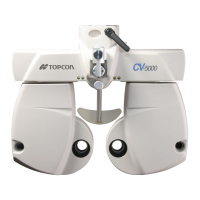
